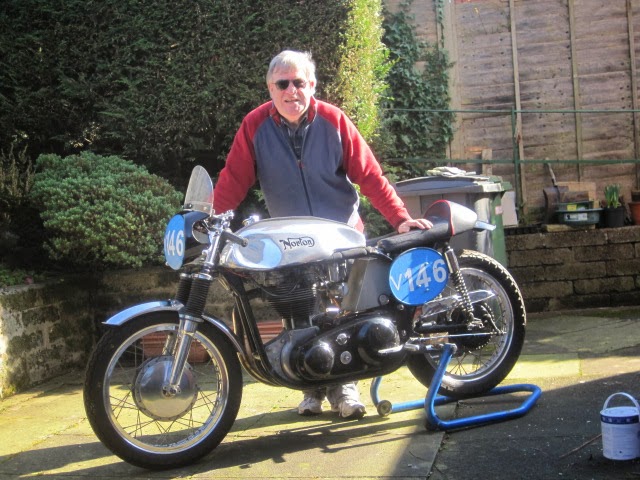Hired a VW transporter van for the trip to York raceway. As I drive a VW car the controls were intuitive . I would have liked a cruise control however !
The Norton fitted perfectly and VW have ideally placed securing points for the web fastenings.
My estimate for the loading height proved spot on and the ramp I made up worked a treat- simply a length of steel channel with two lengths of mild steel angle bolted at an angle to provide the transfer from slope to horizontal. The angle of the slope made for an easy loading by myself.
York raceway is fairly easy to find and is on the old wartime RAF Melbourne runway.
Plenty of room to park up but I was a little later than some having probably travelled much further than the average competitor. Sadly a bad misfire proved incurable after a few attempts to sort so headed back up the M1 homewards to take the ignition apart and find the fault which seemed to arrive when the engine was hot.
Yorkshire was sunny and warm compared with the journey down which was wet and foggy.
The actual sprint strip is well laid out and well run with a good length of run off and a country ride along a perimeter road back to the pit area.



































